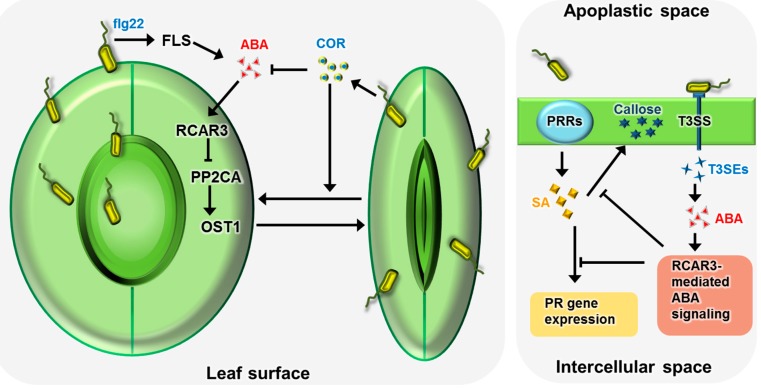Figure 1.
Schematic representation of a possible mechanism underlying the antagonistic and synergistic role of abscisic acid (ABA) signaling in plant defense response at the pre-invasive and post-invasive stages of Arabidopsis thaliana–Pseudomonas syringae interaction. At the pre-invasive stage, ABA signaling plays a synergistic role in plant resistance to P. syringae attack. Stomata constitute a major route of bacterial entry. Pathogen-associated molecular pattern (PAMP)-induced ABA signaling in the guard cells promotes stomatal closure and actively blocks P. syringae invasion [44,48]. This stomatal immunity involves the ABA receptor–2C-type protein phosphatase–open stomata 1 (RCAR-PP2C-OST1) complex acting as a core component of ABA signaling [12,44]. The phytotoxin coronatine (COR) is a virulence factor produced by P. syringae and it can compromise PAMP-induced stomatal defense by suppressing PAMP-induced ABA signaling and promoting stomatal reopening [12,44,49]. In contrast, ABA signaling plays an antagonistic role in post-invasive defense response. Pseudomonas syringae type III secreted effector (T3SE) proteins upregulate ABA biosynthesis and also the signaling pathways, thereby inhibiting the plant defense response [44,50]. In this process, ABA signaling antagonizes salicylic acid (SA)-mediated pathogenesis-related (PR) gene expression and callose deposition [12,48,50].

